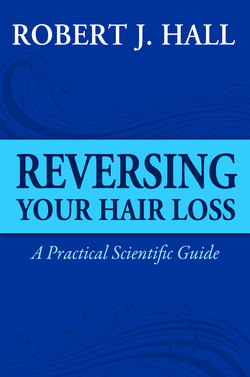Читать книгу Reversing Your Hair Loss - A Practical Scientific Guide - Robert J. Hall - Страница 8
На сайте Литреса книга снята с продажи.
Chapter Four Hair Everywhere
ОглавлениеWe all have hair. Our skin is covered with it. It is one of the major distinguishing features of all mammals, as it happens. Even whales and walruses have it.
The first known animal that definitely had hair was a very early mammalian-type of creature called castorocauda. It looked like a biggish otter and flourished in the middle of the Jurassic Period; this was about the same time as some of the best-known dinosaurs, like the giant swamp-dwelling diplodocus and flying pterodactyls. It was roughly at this point on the evolutionary timeline that feathers also made a first appearance. Both hair and feathers are thought to be genetically derived from the scales of those early dinosaurs.
Human hair actually starts developing in the womb at about fourteen weeks after conception. We do not take much notice of this lanugo hair, as it is called, because it is normally only found on a foetus and thus we never get to see it. Lanugo is replaced by vellus hair at around thirty-four weeks. Babies that still have lanugo are considered to have been born prematurely.
Vellus hair is much finer, softer and has much less colour than lanugo. It is hair proper, though, and can be seen on both sexes, at all ages and on all races (large and distinct variations between them notwithstanding).
In furry animals, this vellus hair quickly develops into normal terminal hair. Fur is, in fact, simply very dense, fine, soft terminal hair. In humans, however, this development into terminal hair is confined to specific and fairly specialised areas like the eyebrows, eyelashes and the top of the head. It is easily distinguishable from vellus because even the finest, least coloured terminal hair is much longer and stronger than any vellus hair.
Strictly speaking, although vellus hair develops into terminal hair at various places around the human body, the process never reverses itself despite what you may read elsewhere. It is true that terminal hair can become vellus-like, but there are differences that always remain between the two. One of the differences, for instance, is that all terminal hair follicles have sebum glands associated with them, whereas with vellus follicles this is not necessarily so.
Hair grows out from these follicles, which are little recesses or pits of infolded skin that reach down in the skin to the lower, dermis layer. At the bottom of these pits are the dermal papillae, which are slightly raised, rounded, bud-like platforms (nipples almost, in fact) of cells rich in blood supply. This is another characteristic difference between vellus and terminal hair. The papilla of a terminal hair has a single loop of a capillary blood vessel within it, whereas those of vellus hair do not. The surface of each little bud is surrounded by the hair bulb, an enlarged portion of the hair shaft found at its base. Hair bulbs receive all their nourishment from the dermal papillae; they do not have their own blood supply.
The hair grows out of the follicles by the continual addition of cells from the hair bulb to the bottom of the shaft. Thus, the shaft is continually pushed upward by the process and the hair is said to ‘grow’.
The blood supply does not extend up the length of the shaft, however, and so the cells rapidly die off after being laid down at the bulb. It is only the hair follicle structure and the hair bulb deep inside it that is actually alive. The filament of hair being pushed out of each follicle is completely dead and is not alive in any sense of the word. So in fact, hair does not ‘grow’ at all. Once you understand all this you suddenly see that hair is simply a fibrous outgrowth of the skin itself, made from exactly the same material.
You will also now see that virtually all the ingredients in modern shampoos are biologically inert with regard to hair. They have been put there simply as a marketing tool to generate further sales by utilising the general public’s ignorance, obsession with cleanliness and drive to attain maximum sexual attractiveness. Make no mistake, the manufacturers of these products know exactly what they are doing and know full well that when they state their products ‘nourish hair’, or some other equally fatuous phrase, that they are lying.
The same attitudes exist amongst the manufacturers of hair-restoring lotions, etc. There are some things that do work but many more that never will and never could have. These latter ones exist only to make money from fear, ignorance and the general desire to improve oneself.
Later chapters in this book will differentiate between those products that work and those that cannot and will give the reasons why they work or will not.
